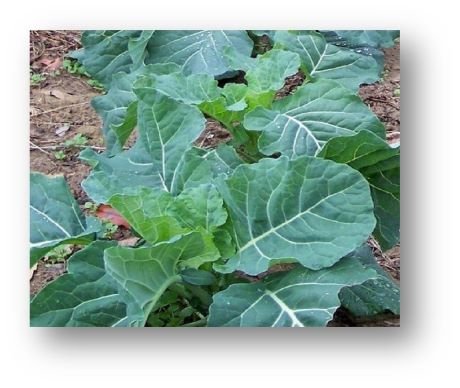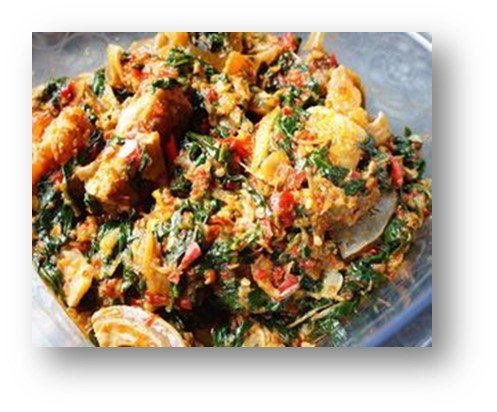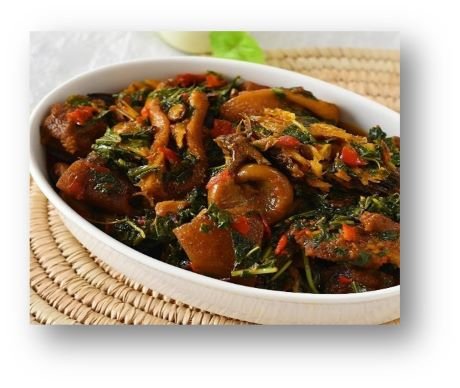If you want to truly understand a people, taste their food.
No, seriously.
Across Africa—and especially in Nigeria—food isn’t just nourishment; it’s a ceremony, a storyteller, a time capsule, and a full-blown cultural mood. From smoky street grills in Lagos to slow-simmered village soups in the heart of Kano, food whispers the history, identity, and heartbeat of a people. This isn’t just “what’s for dinner”—this is who we are.
Welcome to the soulful world of African food culture, where every spice has a story and every dish is a drumbeat of tradition.
🍲 Why Food Is the Soul of African Society
“Culture exists to serve life,” writes anthropologist Clifford Geertz, and in Africa, food culture is one of its most vibrant expressions.
Unlike the more uniform culinary landscapes of the West, African food culture thrives on diversity. It’s layered with indigenous herbs, spiritual symbolism, social bonding, and age-old rituals. From communal eating to celebratory feasts, food in Africa is a connection to heritage, ancestors, community, and the sacred.
And nowhere is this more deliciously evident than in Nigeria—the unofficial food capital of Africa.
🌶️ Nigerian Cuisine: A Spicy Love Letter to the Motherland
Nigeria doesn’t do bland.
It’s a culinary mosaic of over 250 ethnic groups, and each brings their own flavor to the table—literally. Whether it’s the fire of Yoruba pepper stew, the savory depth of Igbo ofe onugbu (bitterleaf soup), or the smoky allure of Hausa suya, Nigerian food is a masterclass in spice, texture, and storytelling.
“We use food to honor the gods, bless the land, and celebrate the milestones,” says Lagos-based chef and food historian, Ozoz Sokoh, founder of Kitchen Butterfly. “There’s memory in every mouthful.”
Many dishes, like egusi (melon seed stew) or jollof rice, are symbolic meals passed down through generations—each family guarding their “secret touch” like royalty.
🌿 Meal Wisdom: Nature’s Pharmacy in a Pot
Let’s talk about herbs.
Nigerians have long known what modern wellness gurus are now rediscovering: food is medicine. From the digestion-aiding scent leaf (efirin) to the anti-inflammatory power of turmeric, and the detoxifying prowess of bitterleaf, most traditional dishes are not only tasty—they’re healing.
A 2023 study from the University of Ibadan even highlighted how everyday Nigerian meals often contain plant compounds with proven antimicrobial and anti-inflammatory benefits. Translation? Your grandma’s spicy goat pepper soup might just be better than your probiotic.
🍢 From Street Snacks to Ceremonial Feasts
Food isn’t just for nourishment—it’s the guest of honor at every Nigerian gathering. Weddings? Rice must flow. Naming ceremonies? Bring the moin-moin. Funerals? A pot of ofada and sauce is practically required.
What’s more, sharing food is sacred. Not feeding your guest at an event is considered a cultural faux pas. It’s not just about hospitality; it’s about respect.
And let’s not sleep on the snack game: puff-puff, akara, boli (roasted plantain), suya, and deep-fried yam chips are just a few of the on-the-go munchies that rule Nigeria’s streets.
🌍 When Jollof Met Fried Chicken: The West’s Influence
The West has definitely left its mark.
Fast food chains, frozen meals, and Western-style supermarkets have made their way into urban Nigerian life. But here’s the twist—while many Nigerians may enjoy the occasional burger, traditional food remains supreme.
“Fusion is happening, yes,” shares culinary content creator Yetunde Eze, “but the foundation is still jollof, efo riro, ogbono, and yam porridge. We’re not giving that up anytime soon.”
That said, the growing Nigerian diaspora is remixing tradition with innovation. Think: jollof arancini, egusi ravioli, or vegan efo riro. It’s Afro-fusion meets foodie finesse.
📍 Food as Identity Across Regions
Let’s break it down, region by region:
- North (Hausa-Fulani) – Think grains like millet and sorghum, milk-based dishes, and grilled meats (suya). Heavy Islamic influence means pork is off the table.
- East (Igbo) – Expect gari, yam, ukwa (breadfruit), and pumpkin dishes. Cassava reigns supreme, often transformed into fufu, porridge, or dumplings.
- West (Yoruba) – Known for richly flavored soups like efo riro, gbegiri, and ewedu, often paired with amala or pounded yam. Pepper is king.
- South-South (Ijaw, Efik, Ibibio) – Seafood rules the day: crab, prawn, fish stews. Coconut rice and edikang ikong are local favorites.
- Urban Nigeria – It’s a melting pot of it all. You’ll find traditional meals sold from chop bars or food trucks, alongside continental menus and Instagrammable fusion plates.
🥄 Why It Matters: Food Is How We Remember
In a time when modern life is speeding up, reconnecting with our food roots has never felt more important.
“African food is a form of resistance,” says food writer Michael Twitty. “It’s how we preserve memory, identity, and dignity in a world that often wants us to forget.”
Whether you’re an African in the diaspora trying to hold on to home through your kitchen, or someone curious about the heart of African culture—understanding food is where you begin.
The Many Faces of Amazing Nigerian Dishes
Nigerian foods are the most exciting, rich, and tasteful of all African cuisine. They are often in the form of thick green vegetables, aromatic spices, and pepper, garnished with assorted meat or fish. These foods can be easily cooked once you know how.
Nutritious Fruits and Green Vegetables Found In Nigerian Cuisine
Afang / Ukazi Leaves


Dark green Shiny foliage of the creeping afang plant cultivated mostly in Calabar and Igbo land and used in a great deal of cuisine from these regions. It can be bought readily shredded from African food stores.
Atama leaves



This is an annual Herb cultivated in the delta areas. It smells and tastes like tarragon; usually used fresh or dried in Banga soup sparingly as flavor. It can be purchased in African food stores.
Avocado


Tropical fruit with thick warty skin usually green or purple in color. The edible flesh inside surrounds a large oval shape seed. It is light yellow and soft when ripe. Avocados can be eaten on its own or cut in half and filled with cooked seafood (Avocado and prawn cocktail).
Beans or Cowpeas


Black-eyed beans or Brown beans have become indispensable in Nigeria cuisine because of its versatility in use. It requires overnight soaking before use for dishes like Akara, Moin-moin and Gbegiri soup.
Bitterleaf


A leafy green vegetable that is widely used in soups like Egusi for its bitter but sweet flavor. The fresh leaves are prepared like spinach and washed with salt; rubbing and squeezing to remove some of the bitterness before use. Can be bought fresh or readily washed and air-dried.
Chili Peppers


Chili peppers are the fruit of Capsicum Frutescence plant with red orange or yellow pods which are very hot, rich in Vitamin A & C and widely used in Nigerian cooking. While the flavor in the chili lies in the flesh and skins, much of the heat potency rests in the seeds and veins which can be removed. Green chilies are a lot hotter than the red ones. The active chemical constituent is capsaicin renowned for stimulating digestive process and helping to relieve heat fatigue in hot climates by inducing perspiration.
Breadfruits


Large green fruits that hang like lanterns from tress. Only edible when cooked and taste like boiled potatoes. It could also be fried crisp.
Cassava


Cassava is a firm root tropical vegetable with a shiny white skin and creamy white fibrous flesh. Usually with a long tuberous root and dull green palmate leaves, mature tubers can be cooked and eaten with coconut (Eberebe); but mostly used for making Gad (Cassava grains) and Fufu. It can be bought ready-made as gaff or cassava flour (Fufu). West Africans use it to make flour, called gari. Packaged gari can be purchased in specialty stores worldwide.
Cocoyam


Cocoyams are similar to large potatoes in that they also have fibrous skin. In Nigeria, the plant is known for both its tubers and leaves. The young and tender leaves are used in preparing Ekpang Nkukwo (cocoa-yam pottage). Spinach leaves make adequate substitute too. The tubers can also be boiled, roasted, or fried.
Corn / Maize
Sweet corn or maize (as it is commonly known) is grown throughout Nigeria as a food source. The plant grows to a height of about seven feet. When fully matured, the swollen fruits (called cobs) are picked and used for food. The cobs can be boiled, roasted or cooked with beans as a main course. A number of by products are obtained from the grains including Ogi (corn-starch) and corn oil which is low in saturated oil and cholesterol.

Millet
Tiny yellow grains obtained from a plant that looks like bull rushes with a maize-like stalk. Grows widely in Northern Nigeria and used mostly for porridge and gruel.
Sorghum
Also known as guinea corn sorghum, it is cultivated mainly in Northern Nigeria. Used for porridge or pap (gruel).
Egusi/Melon Seeds


Seed of the African melon fruit is used in preparing Egusi soup. It should be grinded before use. Even though oily, it adds a nutty flavor to the soup.
Ewedu/Jute Leaves


Shiny green vegetable leaves rich in Vitamins A, C & D. Used as a sauce to accompany stews and enjoyed for its mucilaginous (watery sticky form) or viscous properties. Sold fresh or dried.
Elubo (Yam Flour)


Dried powdered yam flour for making amala (cooked yam flour pudding).
Fufu (Cassava Flour)


Fermented cassava dough usually served cooked to accompany soups.
Garden eggs


Also known as African eggplant; a member of the aubergine family. A round shiny green and yellow fruit with a slightly bitter taste. Garden eggs are eaten raw as a fruit or diced and added to stews.
Okro (Okra aka Lady Fingers)


These vegetables are curved seed pods. Up to 9 inches long, they are usually eaten cooked in soup and salads.
Apon (Ogbono Seed)


These seeds are obtained from the nuts of the African mango bush and air dried in the sun. It has a subtle aromatic flavor and it is very mucilaginous and viscous when cooked. Can be bought whole or powdered.
Pawpaw (Carica Papaya)


This is a fruit of woody herbaceous plant that looks like a tree. It is eaten ripe (yellow or orange in color) in fruit salads or stuffed for appetizers or main course.
Plantain


A large member of the banana family, plantain is less sweeter than banana and is more versatile in use. It is often boiled, toasted or fried and served with meat stews because the tissue has a starchy taste than sweet banana. It is best cooked with plenty of spices, onions, tomatoes and peppers in making plantain pottage.
Ugwu (Pumpkin leaves)


These trailing green leaves of the pumpkin plant are rich in minerals and vitamins. Used in various soup preparations It is the chief ingredient in cooking Edikang Ikong soup. Fresh spinach can be used as substitute in any recipe if not available. Pumpkin seeds can also be eaten raw.
Utazi leaves


Bitter-tasting pale green leaves used for flavoring pepper soup and very sparingly used. It can also be used as a substitute for bitter leaves.
Banana Leaves


Banana is one of the most important food crops in Nigeria. Widely eaten on its own or in fruit salads, they make a good substitute for plantains. The leaves are usually used for wrapping foods such as Anyan-Ekpang or Ebiripo for steaming. Baking foil or greased parchment paper make adequate substitute but do not add the delicate flavor that banana leaves give.
Uzouza Leaves or Ikong Etinkinrin


Sweet-smelling aromatic and spicy pale green leaf vegetable used for flavoring soups especially (Ibaba soup).
Yam



The plant grows as a vine to a height of six to eight feet. The edible tubers come in various shapes and sizes; usually dark brown in color and hairy to the touch. The skin is white or yellow in color and when cooked it has a pleasant flavor; rather like potatoes. It is harvested in dry season with a gig feast known as Yam Festival in Igbo land. Yam still forms the staple diet of a large number of people in Nigeria. It is cooked in different ways including boiled, roasted and fried. When pounded, it is served with soups and stews.
Waterleaf


This is the most widely used of all green leafy vegetables. It is rich in iron, calcium and vitamin A and C and it is best eaten lightly cooked in soups and stews. Spinach can also be used in recipes calling for water leaves.
Kuka Leaves


Leaves of the baobab tree, usually sold dried in powder form and used in making the Kuka soup.
Igbo (Garden Egg Leaves)


The young leaves of the garden egg plants. African Aubergines can be eaten raw in salads or cooked.
Tete (Collard Green)


This green leafy vegetable is much preferred in the making of Efo-riro. It tastes like spinach.
This green is a close relative to Soko and are used interchangeable or in combination. It is widely grown in Western Nigeria.
Soko (Lagos Spinach or Celosia)


Soko is a hearty green leafy vegetable commonly used in traditional Yoruba dishes, especially in preparing rich and flavorful Efo Riro. Slightly firmer than Tete, Soko has a mild, slightly earthy taste that holds up well in soups and stews. It’s often cooked with palm oil, peppers, onions, and assorted meats or fish for that deep, smoky Nigerian flavor.
Closely related to Tete, these two greens are frequently used interchangeably or blended together to add body and texture to dishes. Soko is widely grown and enjoyed across Western Nigeria and is known for its impressive nutritional profile—packed with vitamins A and C, iron, and fiber.
Whether solo or paired, Soko brings both substance and flavor to the pot.
💫 Final Bite
Food in African society isn’t just about what’s on the plate—it’s about who we are, where we’ve been, and where we’re going. And in Nigeria, that story is written in fiery soups, smoky grills, market stalls, and mama’s kitchen.
So the next time someone asks you why Nigerian jollof tastes different, just smile and say: “It’s a whole vibe.”






